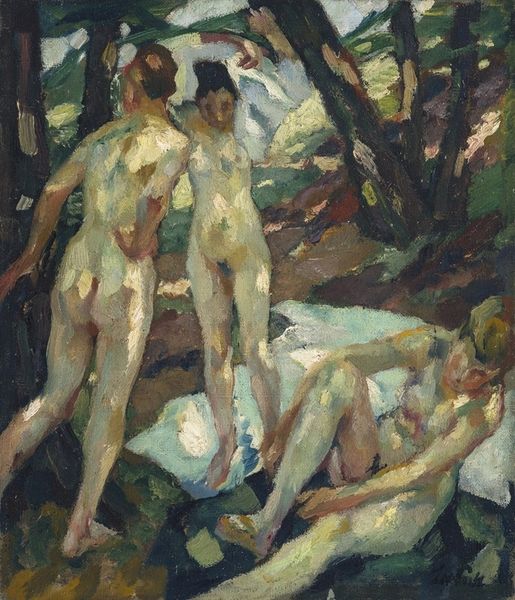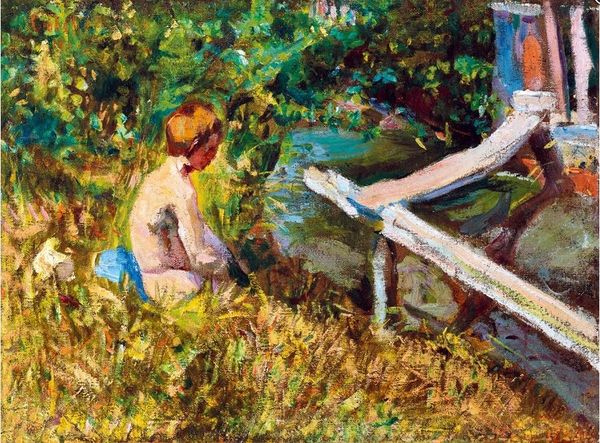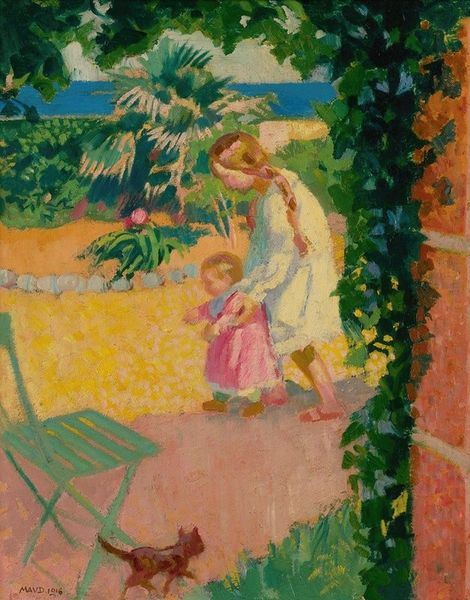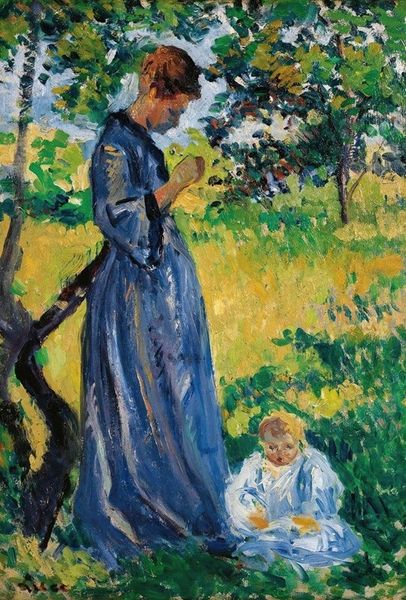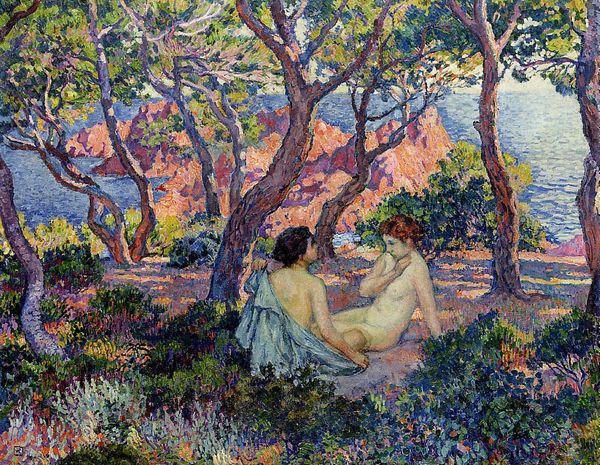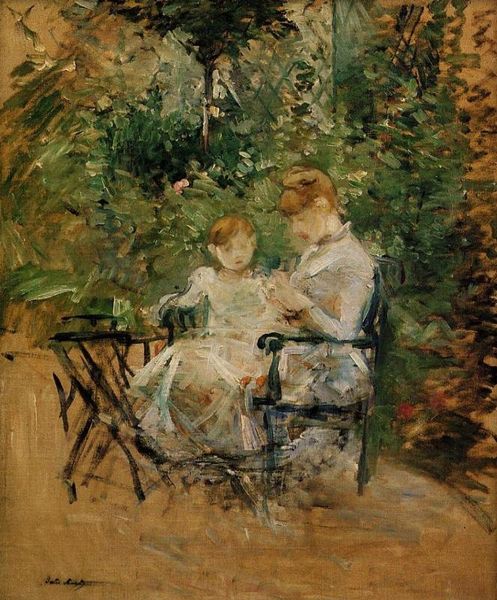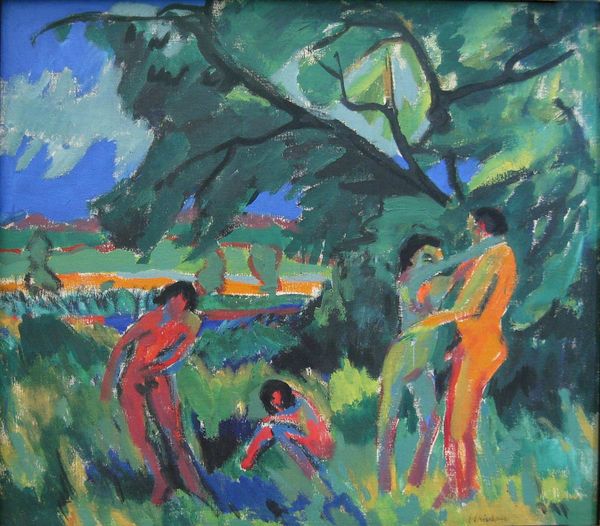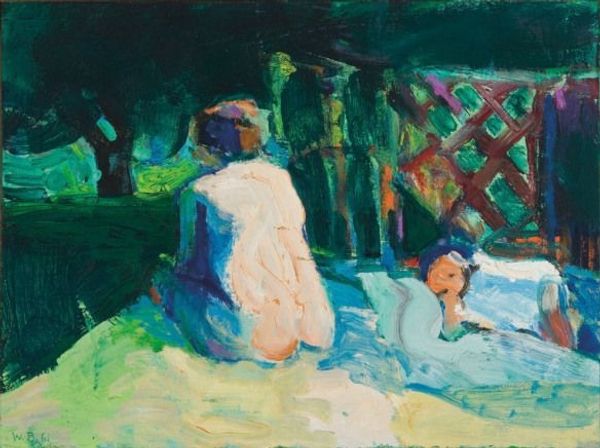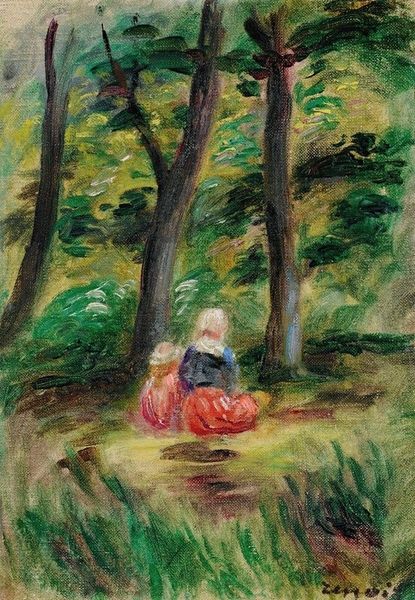
Copyright: Public Domain: Artvee
Maximilien Luce painted "Bessy, un après-midi à la campagne" with visible brushstrokes that construct the scene before us. The composition, dominated by blues and greens, exudes a cool, tranquil atmosphere, inviting contemplation. Luce's application of color and form aligns with Post-Impressionist techniques; observe how the dabs of paint, rather than blending smoothly, create a mosaic-like surface. This method allows light to fragment and dance across the canvas, enlivening the pastoral scene. The figures are integrated into the landscape through color and brushwork, suggesting a harmony between humanity and nature, challenging traditional notions of figure-ground relationships. Consider the semiotic implications of such a scene – the leisure, the shade, the act of reading – these elements speak to a specific cultural context, perhaps reflecting bourgeois ideals of leisure and intellectual pursuit. Ultimately, Luce's emphasis on the materiality of paint and the breakdown of form serves not only as a visual aesthetic, but also as a commentary on perception, representation, and the subjective experience of reality.
Comments
No comments
Be the first to comment and join the conversation on the ultimate creative platform.
